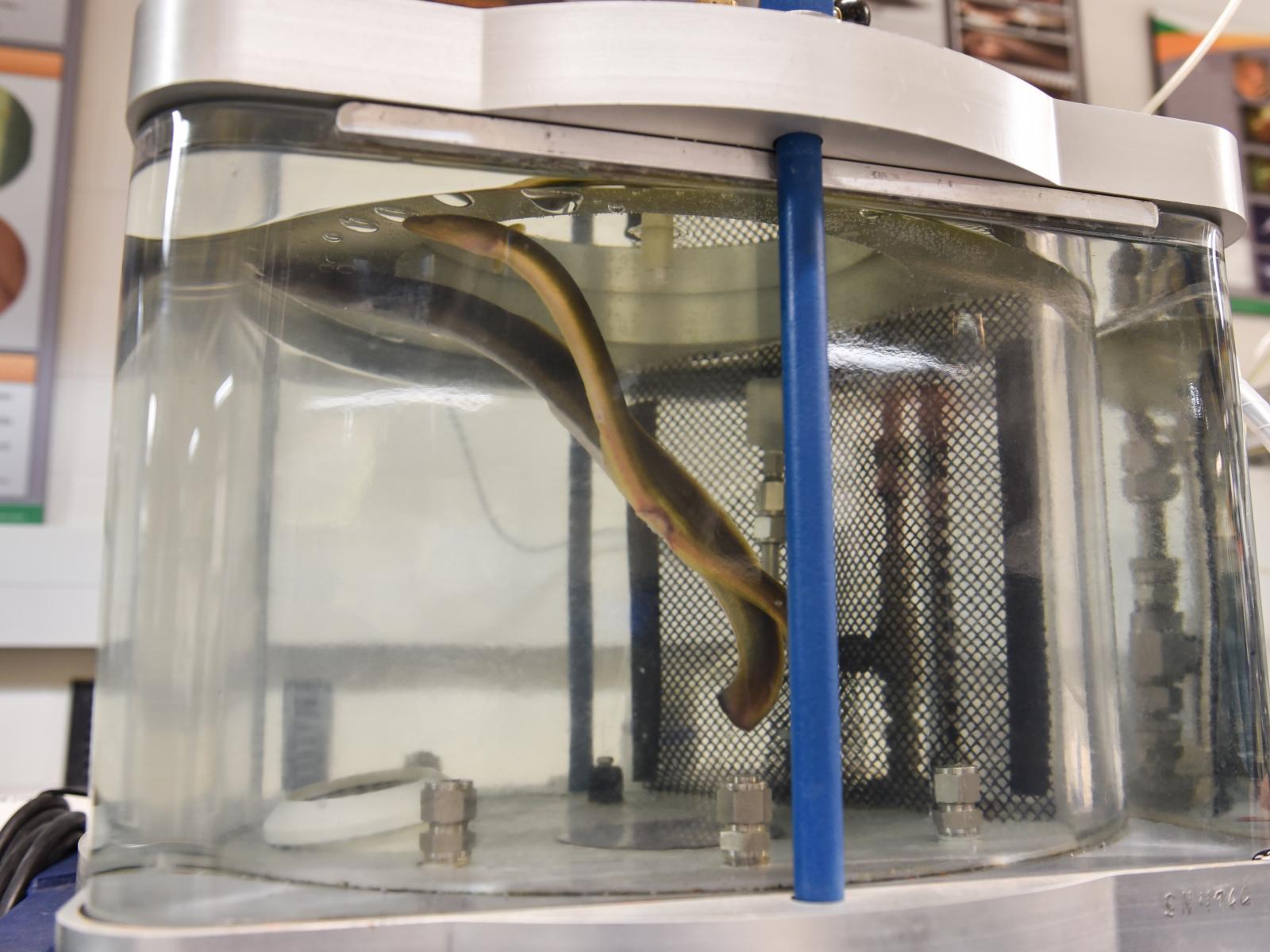Hydropower Biological Testing Equipment
United States

PNNL researchers are exposing American eels to the rapid changes in pressure that they might experience during passage through a hydroturbine. Data from the tests will be used to inform the design and operation of hydroturbines to reduce injury and mortality for fish.
Andrea Starr | Pacific Northwest National Laboratory
As fish pass through hydro structures, they can be exposed to a variety of physical stressors (e.g., rapid decompression, shear forces, turbulence) which can cause injury and even death. PNNL is conducting research to better understand the effects that these stressors have on a variety of different fish species. Researchers have observed a variety of effects including changes in behavior, more than 75 types of injuries, and both immediate and delayed mortality. These data are used to inform optimized hydropower design to reduce the phenomenon and to find ways to integrate environmental protection for fish passage and survival in hydropower operations.
Four hyper/hypobaric hydro-chambers are used to simulate rapid decompression that occurs as fish pass through turbines at hydroelectric dams. Each chamber is equipped with video equipment and scientists can use the images to view expulsion of gas and tags or transmitters, as well as behavior during rapid pressure changes. LabVIEW’s Virtual Interface is used to monitor and control the chambers. The chambers are currently housed within the Aquatics Research Laboratory but can be transported to field sites and run off standard electrical power or a generator coupled with treated water.
A rectangular fiberglass flume containing a submerged water jet is used to create a quantifiable shear environment consistent with conditions expected within a hydroelectric turbine. Flow is generated by using a centrifugal pump with a programmable electronic speed controller. Experiments are recorded using high speed cameras and images are analyzed to form 3D trajectories of fish exposed to shear forces.